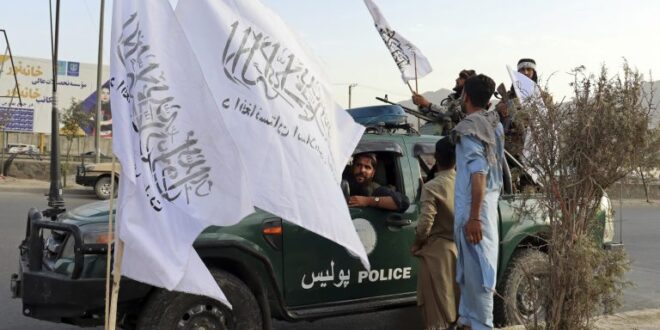India’s regional strategic planning was thrown into disarray by the Taliban takeover in Afghanistan.
China has been a growing focus of India’s planning, but the Taliban takeover returns India’s attention to the historic rivalry with Islamabad.
Pakistan’s close relations with the Taliban give Pakistan long sought “strategic depth” against New Delhi.
Several anti-India Islamist militant groups operate in Pakistan and could find safehaven in Taliban-ruled Afghanistan and threaten the wider region.
The U.S.-led “status quo” that existed in Afghanistan after 2001 benefitted India significantly, as well as a number of neighboring states which benefitted from the pressures on the group as well as likeminded associates throughout the South Asia region. A regime in Kabul that was critical of Pakistan weakened India’s historic rival and enabled India’s strategic planners to devote a greater proportion of their attention to the more significant and longer-term threat posed by a rising China. Aside from the significant financial resources and military technology advancements that make China a growing potential threat, India and China have longstanding border disputes that have sometimes erupted into deadly armed clashes, including most recently in the Himalayas in June 2020. Indian strategists have increasingly sought to address China’s rise not just independently, but also as part of U.S.-led alliances and frameworks designed to contain China strategically as well as economically. The most notable example has been the Quadrilateral Security Dialogue (“Quad”) that links the United States, India, Japan, and Australia, and which held its first in-person summit on September 24 at the White House. At the same time, China has become India’s largest trading partner and a major investor in and supplier to Indian industry, and Indian leaders are hesitant to take any steps that would foreclose diplomatic options and productive engagement with China.
To India, maintaining close ties to Russia – India’s main arms supplier – can potentially help New Delhi balance China’s power. At the conclusion of a visit by Russian President Vladimir Putin to India in early December, the two countries finalized India’s purchase of the Russia-made S-400 missile defense system. Under the Countering America’s Adversaries through Sanctions Act (CAATSA), cooperation with Russia’s defense sector can trigger U.S. penalties, including the imposition of limits on India’s ability to work with the U.S. on the development and procurement of sensitive military technology. However, India’s leaders perceive that the country’s value to the United States, most notably as a counterweight to China, will enable India to avoid U.S. sanctions for the S-400 purchase. The U.S. President has discretion to waive any penalties and might do so in order not to risk damaging the increasingly close U.S.-India relationship.
Yet, India’s attempts to focus on great power competition were thrown into disarray in August when the U.S.-trained Afghan government forces collapsed and the Taliban returned to power in Kabul. The Taliban takeover – virtually a worst-case scenario from New Delhi’s perspective – is certain to draw India’s attention back toward Pakistan, with which India has fought four major wars as well as engaged in countless minor armed clashes and skirmishes. Broadly, the Taliban victory in Afghanistan implies the potential for anti-India and global Islamist militant groups based in Pakistan – and supporters throughout South Asia – to gain safehaven in Afghanistan and Pakistan’s mentorship of the Afghan Taliban to provide Islamabad with strategic depth against India.
The Taliban, by all accounts, has not broken completely with Al Qaeda, which is global in its ambitions but also supports and cooperates with regional groups like the Pakistani militant groups that focus on ending India’s control of Kashmir and Jammu. Such Kashmir-oriented groups include Lashkar e-Taiba (LeT), Jaysh e-Mohammad (JeM), Harakat ul-Jihadi Islami, Harakat al-Mujahidin (HuM) and Hizbul Mujahidin (HM) – all of which have been designated by the United States as foreign terrorist organizations (FTOs). In 2019, a JeM suicide bombing killed 40 Indian paramilitary troops; India retaliated with an airstrike on Pakistan and a brief air battle ensued. LeT was responsible for the major 2008 attacks in Mumbai and has been consistently active against India. Taliban control of Afghanistan increases the potential for members of these and other groups to retreat into and regroup amidst the chaos in Afghanistan during periods when Islamabad might crack down on them. Pakistan historically has done so after any of these groups commit an attack that results in Indian mobilization against Pakistan or causes a high volume of international criticism.
Of perhaps greater concern to Indian planners is the potential for the Taliban takeover of Afghanistan to furnish Pakistan with long-sought “strategic depth.” Pakistan supported the 1996-2001 Taliban regime and allowed its fighters some safehaven in Pakistan during the 2001-2021 U.S.-led stabilization mission. Islamabad considers the Afghan Taliban as a reliable ally against India, which supported the anti-Taliban opposition in the 1990s and would likely do so again if that opposition demonstrates viability. Islamabad could presumably access Afghan territory in any new conventional military conflict with the superior Indian force. Moreover, China’s close relations with Pakistan, as well as the outreach of China’s officials to the new Taliban regime in Kabul, significantly increases the potential for India’s regional adversaries to virtually encircle India. When coupled with the fact that both India and Pakistan are nuclear powers, the strategic setback that India faces from the Taliban takeover of Afghanistan raises the potential for a crisis to erupt in South Asia—with little warning and major implications for regional and global security.
 Eurasia Press & News
Eurasia Press & News


